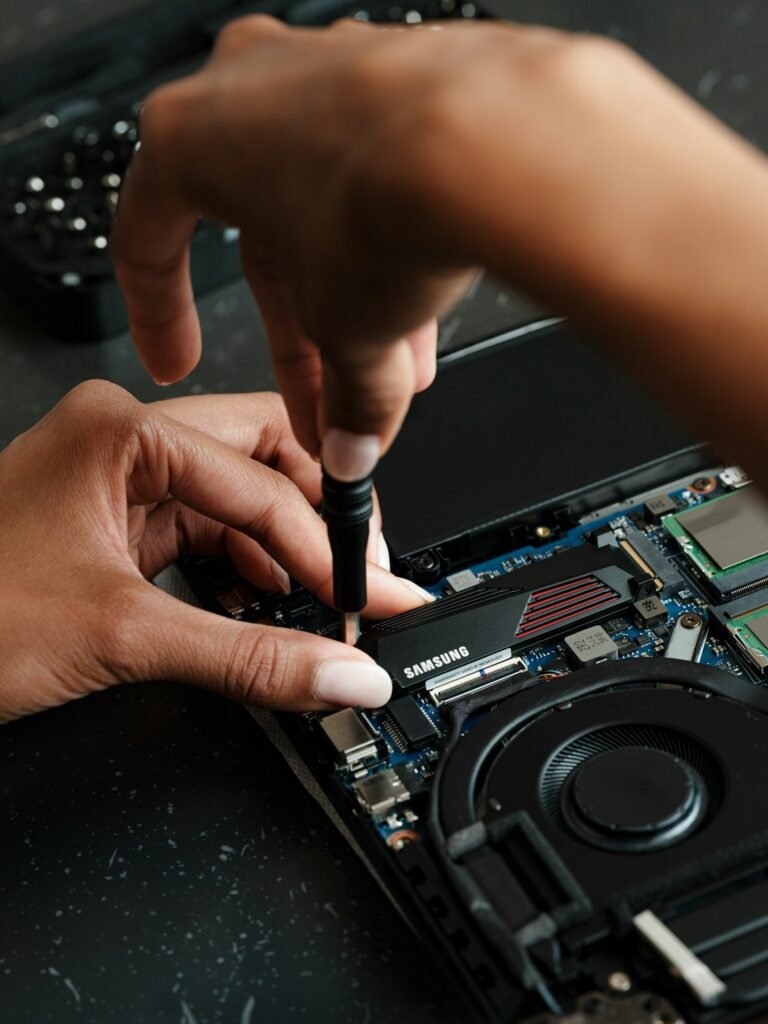In today’s world, consumer electronics are an essential part of everyday life—whether it’s smartphones, laptops, gaming consoles, or smart appliances. However, many companies design these products in ways that make it difficult or even impossible for users to repair them independently. This has sparked the global Right-to-Repair (R2R) movement, a demand for laws and practices that allow consumers to fix and maintain their devices without relying on manufacturers.
This article explores the concept of the right-to-repair, why it matters, and how you can embrace this movement by performing DIY repairs at home with the right tools and mindset.
What Is the Right-to-Repair Movement?
The Right-to-Repair movement is a push for legal frameworks requiring companies to provide consumers with:
- Access to repair manuals.
- Affordable replacement parts and diagnostic tools.
- Software unlocking tools necessary for troubleshooting.
- Design changes to reduce barriers, such as proprietary screws or glued-in batteries.
This movement challenges the “throwaway culture” and aims to reduce e-waste while empowering consumers to make the most of their devices.
Why Right-to-Repair Matters
- Environmental Benefits:
- The world generates more than 50 million tons of e-waste annually, and much of it ends up in landfills. Repairing and extending the lifespan of devices reduces this environmental footprint.
- Cost Savings for Consumers:
- New devices, especially flagship models, are becoming increasingly expensive. Repairs are often much cheaper than buying new replacements if consumers can perform them independently.
- Reducing Corporate Control:
- Some manufacturers limit repairs to authorized services or use software locks to prevent third-party fixes. This creates monopolistic control and drives up repair costs.
- Job Creation in the Repair Industry:
- Independent repair shops are often lifelines for consumers. Supporting the right-to-repair can boost local businesses specializing in maintenance and repair.
The Current State of Right-to-Repair Laws
There’s momentum worldwide toward more robust repair rights. Recent developments include:
- Europe: The EU has introduced right-to-repair requirements for appliances like washing machines and refrigerators, and it’s expanding to other electronics.
- United States: States like California and New York have passed right-to-repair laws covering specific consumer electronics, and a national push for broader legislation is underway.
- India and Australia are also considering or enacting laws to strengthen consumers’ ability to repair their devices.
How to Embrace DIY Repair at Home: A Beginner’s Guide
If you’re ready to join the right-to-repair movement and try fixing your electronics yourself, here’s how you can start:
1. Essential Tools for Repairing Electronics at Home
- Screwdriver sets: A precision screwdriver kit with Torx, Phillips, and flat-head bits is a must.
- Plastic prying tools: Useful for opening cases without damaging fragile surfaces.
- Soldering kit: Required for replacing small components on circuit boards.
- Multimeter: Helps in diagnosing electrical issues.
- Heat gun or hair dryer: Useful for softening adhesives holding screens or batteries.
2. Where to Get Repair Guides and Manuals
- iFixit: A leading online resource with free repair guides for everything from smartphones to game consoles.
- Reddit and YouTube: Communities like r/RightToRepair and tutorial videos make troubleshooting accessible.
- Official repair programs: Apple, Samsung, and other companies now provide repair kits and instructions for some devices (thanks to right-to-repair pressure).
3. Identify Common Repairs You Can Do at Home
Here are some basic repairs you can try with minimal experience:
- Replacing cracked smartphone screens
- Installing new laptop batteries
- Changing faulty charging ports
- Replacing damaged keys or buttons on keyboards and game controllers
4. Safety and Preparation Tips
- Always disconnect power sources and discharge batteries before working on a device.
- Use an anti-static wrist strap to avoid damaging components with static electricity.
- Keep small parts organized—a magnetic parts tray can be a lifesaver.





What to Do When DIY Repair Isn’t Enough
Sometimes, fixing your device at home may not be possible, especially for complex or deeply integrated hardware. In such cases:
- Local repair shops can help if you bring the parts yourself.
- Refurbished parts are a great alternative when new ones are expensive.
- If repair isn’t viable, recycling programs ensure e-waste is disposed of responsibly.
Conclusion: The Future of Repair Rights Is in Your Hands
The right-to-repair is about more than just convenience—it’s about reclaiming ownership over the things we buy, reducing e-waste, and breaking corporate monopolies on repair services. As more countries adopt R2R laws, the power to repair will shift back to consumers. In the meantime, you don’t have to wait for legislation—you can start today by learning to fix your own devices and encouraging others to do the same.
Remember, every repair counts, whether it’s swapping a battery or replacing a screen. By repairing, not replacing, you’re contributing to a greener planet, saving money, and helping shape a more sustainable future.












